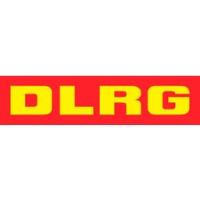
Presidencia de la República del Paraguay Company Cyber Security Posture
presidencia.gov.pyEl Decreto No 7208, de fecha 28 de setiembre de 1990, aprueba la estructura administrativa de la Presidencia de la República en los siguientes órganos: a. Gabinete Militar b. Gabinete Civil c. Secretaria Privada d. Secretaria Técnica de Planificación del Desarrollo Económico y Social Fuete: http://www.presidencia.gov.py/v1/?page_id=1778
PDLRDP Company Details
presidencia-de-la-rep-blica-del-paraguay
101 employees
2579.0
922
Government Administration
presidencia.gov.py
Scan still pending
PRE_1825596
In-progress
Between 900 and 1000
This score is AI-generated and less favored by cyber insurers, who prefer the TPRM score.
 PDLRDP Global Score
PDLRDP Global Score.png)

Presidencia de la República del Paraguay Company Scoring based on AI Models
| Model Name | Date | Description | Current Score Difference | Score |
|---|---|---|---|---|
| AVERAGE-Industry | 03-12-2025 | This score represents the average cybersecurity rating of companies already scanned within the same industry. It provides a benchmark to compare an individual company's security posture against its industry peers. | N/A | Between 900 and 1000 |
Presidencia de la República del Paraguay Company Cyber Security News & History
| Entity | Type | Severity | Impact | Seen | Url ID | Details | View |
|---|---|---|---|---|---|---|---|
| Government of Paraguay | Cyber Attack | 100 | 6/2025 | PRE301062425 | Link | ||
Rankiteo Explanation : Attack threatening the organization’s existenceDescription: Troves of data on effectively every Paraguayan citizen were stolen by hackers who infected a government employee’s device with infostealer malware. The personal information of 7.4 million Paraguayans was offered for sale on the dark web following alleged breaches at several government agencies. The data was initially discovered by researchers at the cybersecurity firm Resecurity, who said the hackers — known as Brigada Cyber PMC — were selling the information for $7.4 million. Paraguay refused to pay the ransom and the data was published on June 13. | |||||||
Presidencia de la República del Paraguay Company Subsidiaries

El Decreto No 7208, de fecha 28 de setiembre de 1990, aprueba la estructura administrativa de la Presidencia de la República en los siguientes órganos: a. Gabinete Militar b. Gabinete Civil c. Secretaria Privada d. Secretaria Técnica de Planificación del Desarrollo Económico y Social Fuete: http://www.presidencia.gov.py/v1/?page_id=1778
Access Data Using Our API

Get company history
.png)
PDLRDP Cyber Security News
10 tough cybersecurity questions every CISO must answer
1. Am I a business enabler or an impediment? The security function can have a reputation for being the “department of 'no,'” so CISOs should ...
BB vs. PANW: Which Cybersecurity Stock is the Smarter Pick Now?
BB's strong government ties, cost cuts, and lower valuation make it a compelling cybersecurity play over PANW now.
BlackBerry raises annual revenue forecast on robust demand for cybersecurity services
BlackBerry now sees fiscal year 2026 revenue in the range of $508 million to $538 million, up from its earlier forecast of $504 million to $534 ...
Create a Company Culture That Takes Cybersecurity Seriously
In the U.S. alone, the annual damage from cybercrime has increased by 33%, rising to $16 billion in 2024. The vast majority of these ...
Better Cybersecurity Stock: CrowdStrike or SentinelOne?
CrowdStrike and SentinelOne have similar business models and offerings. CrowdStrike is much larger. SentinelOne trades at a steep discount to ...
FBI pivots resources to counterterror, cybersecurity efforts amid Iran retaliation threat: source
FBI pivots resources to cybersecurity and counterterrorism amid escalating tensions with Iran following missile attacks on U.S. base in ...
The complexity trap: why cybersecurity must be simplified
Complex problems often demand simple answers. When we overcomplicate things, whether in life or business, we almost always end up worse off.
Insurers ‘Under Siege’ by Notorious Hacking Group
Aflac and other insurance companies report breaches that bear hallmarks of recent cyberattacks at Marks & Spencer and MGM Resorts.
FBI and Canadian cybersecurity agency warns: Chinese hackers attacking telecom services in Canada
Canada's cybersecurity agency has warned that Chinese-backed hackers, known as Salt Typhoon, are likely behind a recent attack compromising ...

PDLRDP Similar Companies

U.S. Department of Homeland Security
The Department of Homeland Security (DHS) has a vital mission: to secure the nation from the many threats we face. This requires the hard work of more than 260,000 employees in jobs that range from aviation and border security to emergency response, from cybersecurity analyst to chemical facility in

Ministry of Energy of the Republic of Kazakhstan
The Ministry carries out the formation and implementation of state policy, coordinates the management process in the fields of oil and gas, petrochemical industry, hydrocarbon transportation, in the field of uranium mining, state regulation of the production of petroleum products, gas and gas supply

Vlaamse overheid
Bij de Vlaamse overheid geef je elke dag opnieuw het beste van jezelf, in een job die een verschil maakt in de maatschappij. Pas afgestudeerd of al een aantal jaren professionele ervaring achter de rug? Op zoek naar een job als arbeider, bediende, leidinggevende, administratief medewerker, ingenie

DLRG
Wir, die Deutsche Lebens-Rettungs-Gesellschaft e.V. (DLRG), sind mit über 1,9 Millionen Mitgliedern und Förderern die größte Wasserrettungsorganisation der Welt. Seit unserer Gründung im Jahr 1913 haben wir es uns zur Aufgabe gemacht, Menschen vor dem Ertrinken zu bewahren. Schirmherr ist Bunde

City of Philadelphia
With a workforce of 30,000 people, and opportunities in 1,000 different job categories, the City of Philadelphia is one of the largest employers in Southeastern Pennsylvania. As an employer, we operate through the guiding principles of service, integrity, respect, accountability, collaboration, dive

Ministry of the Interior and Kingdom Relations
Het ministerie van BZK borgt de kernwaarden van de democratie. BZK staat voor een goed en slagvaardig openbaar bestuur en een overheid waar burgers op kunnen vertrouwen. BZK draagt eraan bij dat burgers kunnen wonen in betaalbare, veilige en energiezuinige woningen in een buurt waar iedereen meetelt

Frequently Asked Questions (FAQ) on Cybersecurity Incidents
PDLRDP CyberSecurity History Information
Total Incidents: According to Rankiteo, PDLRDP has faced 1 incidents in the past.
Incident Types: The types of cybersecurity incidents that have occurred include ['Cyber Attack'].
Total Financial Loss: The total financial loss from these incidents is estimated to be {total_financial_loss}.
Cybersecurity Posture: The company's overall cybersecurity posture is described as El Decreto No 7208, de fecha 28 de setiembre de 1990, aprueba la estructura administrativa de la Presidencia de la República en los siguientes órganos: a. Gabinete Militar b. Gabinete Civil c. Secretaria Privada d. Secretaria Técnica de Planificación del Desarrollo Económico y Social Fuete: http://www.presidencia.gov.py/v1/?page_id=1778.
Detection and Response: The company detects and responds to cybersecurity incidents through {description_of_detection_and_response_process}.
Incident Details
Incident 1: Ransomware Attack
Title: {Incident_Title}
Description: {Brief_description_of_the_incident}
Date Detected: {Detection_Date}
Date Publicly Disclosed: {Disclosure_Date}
Date Resolved: {Resolution_Date}
Type: {Type_of_Attack}
Attack Vector: {Attack_Vector}
Vulnerability Exploited: {Vulnerability}
Threat Actor: {Threat_Actor}
Motivation: {Motivation}
Incident 2: Data Breach
Title: {Incident_Title}
Description: {Brief_description_of_the_incident}
Date Detected: {Detection_Date}
Date Publicly Disclosed: {Disclosure_Date}
Date Resolved: {Resolution_Date}
Type: {Type_of_Attack}
Attack Vector: {Attack_Vector}
Vulnerability Exploited: {Vulnerability}
Threat Actor: {Threat_Actor}
Motivation: {Motivation}
Common Attack Types: As of now, the company has not encountered any reported incidents involving common cyberattacks.
Identification of Attack Vectors: The company identifies the attack vectors used in incidents through {description_of_identification_process}.
Impact of the Incidents
Incident 1: Ransomware Attack
Financial Loss: {Financial_Loss}
Data Compromised: {Data_Compromised}
Systems Affected: {Systems_Affected}
Downtime: {Downtime}
Operational Impact: {Operational_Impact}
Conversion Rate Impact: {Conversion_Rate_Impact}
Revenue Loss: {Revenue_Loss}
Customer Complaints: {Customer_Complaints}
Brand Reputation Impact: {Brand_Reputation_Impact}
Legal Liabilities: {Legal_Liabilities}
Identity Theft Risk: {Identity_Theft_Risk}
Payment Information Risk: {Payment_Information_Risk}
Incident 2: Data Breach
Financial Loss: {Financial_Loss}
Data Compromised: {Data_Compromised}
Systems Affected: {Systems_Affected}
Downtime: {Downtime}
Operational Impact: {Operational_Impact}
Conversion Rate Impact: {Conversion_Rate_Impact}
Revenue Loss: {Revenue_Loss}
Customer Complaints: {Customer_Complaints}
Brand Reputation Impact: {Brand_Reputation_Impact}
Legal Liabilities: {Legal_Liabilities}
Identity Theft Risk: {Identity_Theft_Risk}
Payment Information Risk: {Payment_Information_Risk}
Average Financial Loss: The average financial loss per incident is {average_financial_loss}.
Commonly Compromised Data Types: The types of data most commonly compromised in incidents are {list_of_commonly_compromised_data_types}.
Incident 1: Ransomware Attack
Entity Name: {Entity_Name}
Entity Type: {Entity_Type}
Industry: {Industry}
Location: {Location}
Size: {Size}
Customers Affected: {Customers_Affected}
Incident 2: Data Breach
Entity Name: {Entity_Name}
Entity Type: {Entity_Type}
Industry: {Industry}
Location: {Location}
Size: {Size}
Customers Affected: {Customers_Affected}
Response to the Incidents
Incident 1: Ransomware Attack
Incident Response Plan Activated: {Yes/No}
Third Party Assistance: {Yes/No}
Law Enforcement Notified: {Yes/No}
Containment Measures: {Containment_Measures}
Remediation Measures: {Remediation_Measures}
Recovery Measures: {Recovery_Measures}
Communication Strategy: {Communication_Strategy}
Adaptive Behavioral WAF: {Adaptive_Behavioral_WAF}
On-Demand Scrubbing Services: {On_Demand_Scrubbing_Services}
Network Segmentation: {Network_Segmentation}
Enhanced Monitoring: {Enhanced_Monitoring}
Incident 2: Data Breach
Incident Response Plan Activated: {Yes/No}
Third Party Assistance: {Yes/No}
Law Enforcement Notified: {Yes/No}
Containment Measures: {Containment_Measures}
Remediation Measures: {Remediation_Measures}
Recovery Measures: {Recovery_Measures}
Communication Strategy: {Communication_Strategy}
Adaptive Behavioral WAF: {Adaptive_Behavioral_WAF}
On-Demand Scrubbing Services: {On_Demand_Scrubbing_Services}
Network Segmentation: {Network_Segmentation}
Enhanced Monitoring: {Enhanced_Monitoring}
Incident Response Plan: The company's incident response plan is described as {description_of_incident_response_plan}.
Third-Party Assistance: The company involves third-party assistance in incident response through {description_of_third_party_involvement}.
Data Breach Information
Incident 2: Data Breach
Type of Data Compromised: {Type_of_Data}
Number of Records Exposed: {Number_of_Records}
Sensitivity of Data: {Sensitivity_of_Data}
Data Exfiltration: {Yes/No}
Data Encryption: {Yes/No}
File Types Exposed: {File_Types}
Personally Identifiable Information: {Yes/No}
Prevention of Data Exfiltration: The company takes the following measures to prevent data exfiltration: {description_of_prevention_measures}.
Handling of PII Incidents: The company handles incidents involving personally identifiable information (PII) through {description_of_handling_process}.
Ransomware Information
Incident 1: Ransomware Attack
Ransom Demanded: {Ransom_Amount}
Ransom Paid: {Ransom_Paid}
Ransomware Strain: {Ransomware_Strain}
Data Encryption: {Yes/No}
Data Exfiltration: {Yes/No}
Ransom Payment Policy: The company's policy on paying ransoms in ransomware incidents is described as {description_of_ransom_payment_policy}.
Data Recovery from Ransomware: The company recovers data encrypted by ransomware through {description_of_data_recovery_process}.
Regulatory Compliance
Incident 1: Ransomware Attack
Regulations Violated: {Regulations_Violated}
Fines Imposed: {Fines_Imposed}
Legal Actions: {Legal_Actions}
Regulatory Notifications: {Regulatory_Notifications}
Incident 2: Data Breach
Regulations Violated: {Regulations_Violated}
Fines Imposed: {Fines_Imposed}
Legal Actions: {Legal_Actions}
Regulatory Notifications: {Regulatory_Notifications}
Regulatory Frameworks: The company complies with the following regulatory frameworks regarding cybersecurity: {list_of_regulatory_frameworks}.
Ensuring Regulatory Compliance: The company ensures compliance with regulatory requirements through {description_of_compliance_measures}.
Lessons Learned and Recommendations
Incident 1: Ransomware Attack
Lessons Learned: {Lessons_Learned}
Incident 2: Data Breach
Lessons Learned: {Lessons_Learned}
Incident 1: Ransomware Attack
Recommendations: {Recommendations}
Incident 2: Data Breach
Recommendations: {Recommendations}
Key Lessons Learned: The key lessons learned from past incidents are {list_of_key_lessons_learned}.
Implemented Recommendations: The company has implemented the following recommendations to improve cybersecurity: {list_of_implemented_recommendations}.
References
Additional Resources: Stakeholders can find additional resources on cybersecurity best practices at {list_of_additional_resources}.
Investigation Status
Incident 1: Ransomware Attack
Investigation Status: {Investigation_Status}
Incident 2: Data Breach
Investigation Status: {Investigation_Status}
Communication of Investigation Status: The company communicates the status of incident investigations to stakeholders through {description_of_communication_process}.
Stakeholder and Customer Advisories
Incident 1: Ransomware Attack
Stakeholder Advisories: {Stakeholder_Advisories}
Customer Advisories: {Customer_Advisories}
Incident 2: Data Breach
Stakeholder Advisories: {Stakeholder_Advisories}
Customer Advisories: {Customer_Advisories}
Advisories Provided: The company provides the following advisories to stakeholders and customers following an incident: {description_of_advisories_provided}.
Initial Access Broker
Incident 1: Ransomware Attack
Entry Point: {Entry_Point}
Reconnaissance Period: {Reconnaissance_Period}
Backdoors Established: {Backdoors_Established}
High Value Targets: {High_Value_Targets}
Data Sold on Dark Web: {Yes/No}
Incident 2: Data Breach
Entry Point: {Entry_Point}
Reconnaissance Period: {Reconnaissance_Period}
Backdoors Established: {Backdoors_Established}
High Value Targets: {High_Value_Targets}
Data Sold on Dark Web: {Yes/No}
Monitoring and Mitigation of Initial Access Brokers: The company monitors and mitigates the activities of initial access brokers through {description_of_monitoring_and_mitigation_measures}.
Post-Incident Analysis
Incident 1: Ransomware Attack
Root Causes: {Root_Causes}
Corrective Actions: {Corrective_Actions}
Incident 2: Data Breach
Root Causes: {Root_Causes}
Corrective Actions: {Corrective_Actions}
Post-Incident Analysis Process: The company's process for conducting post-incident analysis is described as {description_of_post_incident_analysis_process}.
Corrective Actions Taken: The company has taken the following corrective actions based on post-incident analysis: {list_of_corrective_actions_taken}.
Additional Questions
General Information
Ransom Payment History: The company has {paid/not_paid} ransoms in the past.
Last Ransom Demanded: The amount of the last ransom demanded was {last_ransom_amount}.
Last Attacking Group: The attacking group in the last incident was {last_attacking_group}.
Incident Details
Most Recent Incident Detected: The most recent incident detected was on {most_recent_incident_detected_date}.
Most Recent Incident Publicly Disclosed: The most recent incident publicly disclosed was on {most_recent_incident_publicly_disclosed_date}.
Most Recent Incident Resolved: The most recent incident resolved was on {most_recent_incident_resolved_date}.
Impact of the Incidents
Highest Financial Loss: The highest financial loss from an incident was {highest_financial_loss}.
Most Significant Data Compromised: The most significant data compromised in an incident was {most_significant_data_compromised}.
Most Significant System Affected: The most significant system affected in an incident was {most_significant_system_affected}.
Response to the Incidents
Third-Party Assistance in Most Recent Incident: The third-party assistance involved in the most recent incident was {third_party_assistance_in_most_recent_incident}.
Containment Measures in Most Recent Incident: The containment measures taken in the most recent incident were {containment_measures_in_most_recent_incident}.
Data Breach Information
Most Sensitive Data Compromised: The most sensitive data compromised in a breach was {most_sensitive_data_compromised}.
Number of Records Exposed: The number of records exposed in the most significant breach was {number_of_records_exposed}.
Ransomware Information
Highest Ransom Demanded: The highest ransom demanded in a ransomware incident was {highest_ransom_demanded}.
Highest Ransom Paid: The highest ransom paid in a ransomware incident was {highest_ransom_paid}.
Regulatory Compliance
Highest Fine Imposed: The highest fine imposed for a regulatory violation was {highest_fine_imposed}.
Most Significant Legal Action: The most significant legal action taken for a regulatory violation was {most_significant_legal_action}.
Lessons Learned and Recommendations
Most Significant Lesson Learned: The most significant lesson learned from past incidents was {most_significant_lesson_learned}.
Most Significant Recommendation Implemented: The most significant recommendation implemented to improve cybersecurity was {most_significant_recommendation_implemented}.
References
Most Recent Source: The most recent source of information about an incident is {most_recent_source}.
Most Recent URL for Additional Resources: The most recent URL for additional resources on cybersecurity best practices is {most_recent_url}.
Investigation Status
Current Status of Most Recent Investigation: The current status of the most recent investigation is {current_status_of_most_recent_investigation}.
Stakeholder and Customer Advisories
Most Recent Stakeholder Advisory: The most recent stakeholder advisory issued was {most_recent_stakeholder_advisory}.
Most Recent Customer Advisory: The most recent customer advisory issued was {most_recent_customer_advisory}.
Initial Access Broker
Most Recent Entry Point: The most recent entry point used by an initial access broker was {most_recent_entry_point}.
Most Recent Reconnaissance Period: The most recent reconnaissance period for an incident was {most_recent_reconnaissance_period}.
Post-Incident Analysis
Most Significant Root Cause: The most significant root cause identified in post-incident analysis was {most_significant_root_cause}.
Most Significant Corrective Action: The most significant corrective action taken based on post-incident analysis was {most_significant_corrective_action}.
What Do We Measure?
















Every week, Rankiteo analyzes billions of signals to give organizations a sharper, faster view of emerging risks. With deeper, more actionable intelligence at their fingertips, security teams can outpace threat actors, respond instantly to Zero-Day attacks, and dramatically shrink their risk exposure window.
These are some of the factors we use to calculate the overall score:
Identify exposed access points, detect misconfigured SSL certificates, and uncover vulnerabilities across the network infrastructure.
Gain visibility into the software components used within an organization to detect vulnerabilities, manage risk, and ensure supply chain security.
Monitor and manage all IT assets and their configurations to ensure accurate, real-time visibility across the company's technology environment.
Leverage real-time insights on active threats, malware campaigns, and emerging vulnerabilities to proactively defend against evolving cyberattacks.




